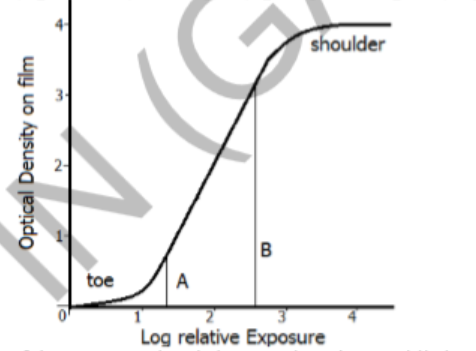An image of the chest of a patient is taken with an $X-ray$ machine on a photographic film. The Hurter-Driffield (HD) curve of the film is shown in the figure. The highly absorbing parts of the body (e.g. bones), show up as low exposure regions(mapped near A) and the less absorbing parts (e.g. muscles) show up as high exposure regions (mapped near B).

If the exposure time is increased $10$ times, while keeping the voltages and currents in the X-ray machine constant, in the image,
- contrast decrease since B moves into the shoulder region
- contrast decreases since both A and B move into the shoulder region
- contrast increases since A moves into the toe region
- contrast decreases since both A and B move into the toe region